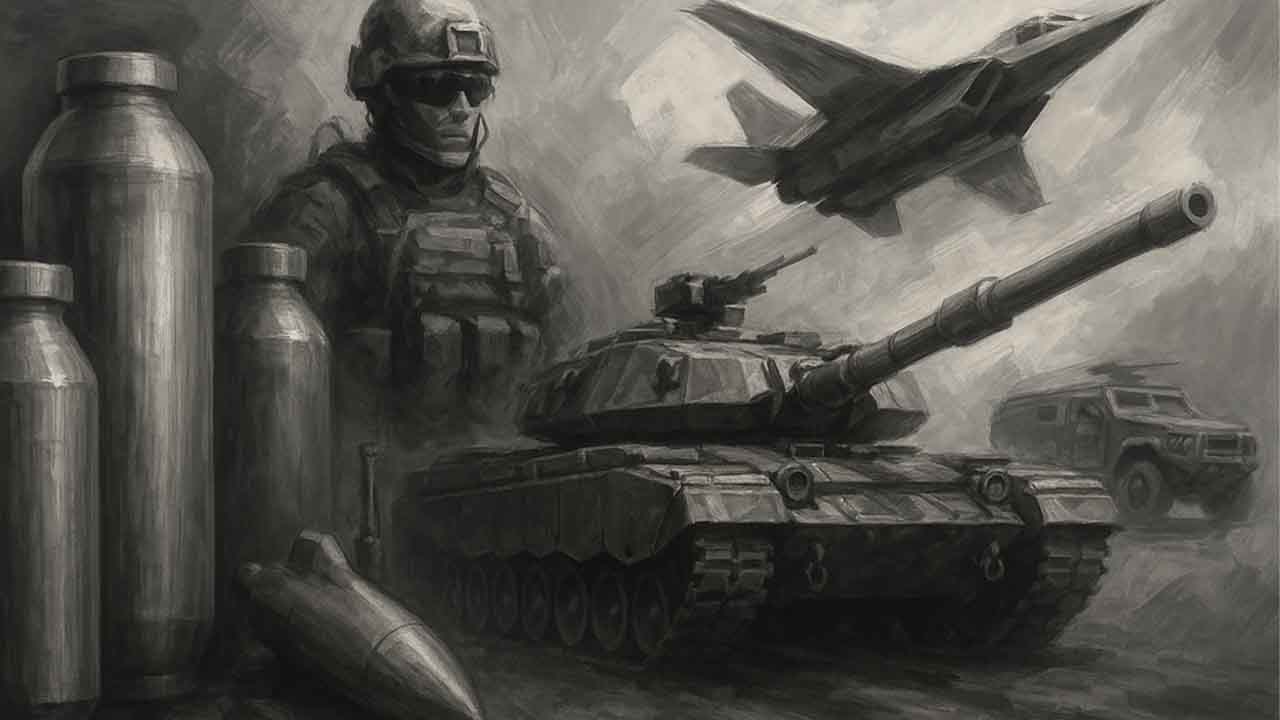
Titanium: The Strategic Metal That Powers Empires
With production concentrated in a handful of countries and demand rising from aerospace to EVs, titanium’s role as a critical mineral has never been more vital. For investors, the story is clear: titanium isn’t just an industrial metal, it’s a pillar of future security and innovation.
In the 1950s, when the U.S. and Soviet Union raced to the skies, one metal became their secret weapon: titanium. Lighter than steel, stronger than aluminum, and able to withstand the kind of heat that would melt other metals, titanium quickly earned its place as the backbone of fighter jets, spacecraft, and nuclear submarines.
Today, that same metal is at the center of a new global race - not for space, but for energy, security, and survival in a fractured world economy. And as with lithium, uranium, and vanadium, the stakes for titanium have never been higher.
The Birth of a Strategic Metal
Titanium was first discovered in Cornwall in 1791, but for over a century, it sat in relative obscurity. It wasn’t until the 20th century, through the Kroll process, that titanium could finally be extracted in commercial volumes. Suddenly, a metal once locked in sand and ore was transformed into a material fit for jets, missiles, and submarines.
By the Cold War, titanium was no longer just a scientific curiosity; it was a geopolitical asset. The SR‑71 Blackbird spy plane, capable of cruising at Mach 3, owed its existence to titanium. Without it, the U.S. couldn’t have maintained air superiority.
Price Volatility: A Market That Never Sleeps
Titanium has always carried the DNA of a strategic asset: scarce, in demand, and vulnerable to geopolitical pressures.
- Historic highs: In May 2022, Chinese titanium prices spiked to 152 CNY/kg (~$22/kg).
- Today’s levels: As of June 2025, titanium trades around $3,000/MT in the U.S., Japan, and Europe.
- Trendline: The U.S. Producer Price Index for titanium alloys sits at 233.71, up nearly 9% year‑over‑year, showing steady upward pressure.
Why the climb? Limited sponge producers, environmental crackdowns in China, and resurgent demand from aerospace, defense, and green energy sectors.
The Global Supply Chessboard
Here’s the revelation most retail investors miss: the world’s titanium supply is dangerously concentrated.
- VSMPO‑AVISMA (Russia): Controls ~30% of global aerospace‑grade titanium. Europe’s Airbus still leans on it despite sanctions.
- Osaka Titanium Technologies (Japan): The world’s #2 sponge producer.
- Toho Titanium (Japan): Expanding aggressively, even into Saudi Arabia.
- ATI (US): A rare North American sponge producer, supplying defense and aerospace industries.
- Tronox & Kenmare (US & Mozambique): Key suppliers of ilmenite and rutile for titanium dioxide pigment.
- Pigment giants: Chemours, Kronos, Venator, and China’s Lomon Billions dominate TiO₂ production.
Currently, China and Russia combine to produce about 70% of the world supply of titanium, meaning only a handful of producers control the fate of titanium supply. For North America—where security of supply is now a national priority—this concentration is both a risk and an opportunity.
Who Consumes the Most the Titanium and Why
Titanium’s demand is less about luxury and more about survival:
Aerospace & Defense (≈75%)
- The Boeing 787 carries 116 tons of titanium.
- Naval ships and missiles depend on it for strength and heat resistance.
Industrial & Automotive
- EV makers are quietly testing titanium components for durability and weight savings.
Titanium Dioxide Pigments
- The hidden giant: paints, plastics, paper, cosmetics.
- A market dominated by a few chemical titans.
Medical & Marine
- Surgical implants, desalination plants, deep‑sea submersibles.
Whereas lithium is the metal of EV batteries, titanium is the metal of aerospace supremacy and industrial backbone. Both are critical, but in different ways.
Titanium vs Lithium: Two Strategic Metals
Lithium is the EV revolution’s darling, while titanium is the quiet workhorse of military and industrial dominance.
According to Precedence Research, in the article, Lithium Market Powers Ahead with Innovation and Electrification Trends,
"In terms of revenue, the lithium market is valued at $11.05 billion in 2025. It is projected to reach $31.44 billion by 2034."
Amazingly, the titanium market, without the fanfare of lithium and its association with EVs is actually a larger market. In the article, Titanium Market Size, Share, and Trends 2025 to 2034,
"The global titanium market size was valued at USD 28.58 billion in 2024, and is projected to hit around USD 30.44 billion by 2025, and is anticipated to reach around USD 53.65 billion by 2034, expanding at a CAGR of 6.50% over the forecast period from 2025 to 2034."
The Canadian Connection
Here’s where it gets interesting for North American investors. Some places in Canada have geology with similarities to world‑class titanium‑vanadium‑iron intrusions. These layered mafic complexes may offer domestic supply of titanium and vanadium at a time when the West is desperate to reduce reliance on Russia and China.
The Stakes: Why Titanium Matters Now
The Revelation is clear: titanium isn’t just another commodity. Whoever controls a domestic or secure supply can attain:
- Aerospace dominance.
- Energy transition infrastructure.
- A hedge against geopolitical fragility.
Like lithium five years ago, titanium is moving from niche coverage to mainstream headlines. And just as the lithium boom minted fortunes for early backers, titanium could reward those who understand its strategic trajectory today.
Final Take: A Metal That Shapes the Future
In a world where energy security and defense capability decide the winners and losers of geopolitics, titanium stands out. Its scarcity, its irreplaceable uses, and its fragile supply chain make it one of the most strategically critical minerals of our era.
For North American investors, the story is just beginning. Whether through established aerospace supply deals or untapped deposits, titanium will remain a battleground for economic power.
The question is: who will secure it first?
Latest Insights
Recent Highlights from Our YouTube Channel
Comprehensive reviews of current market dynamics and the latest trends influencing the future of investments.
